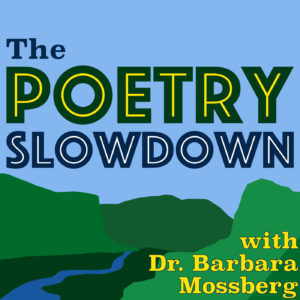 A theory brought to you through blood, sweat, tears, and fears, through the post post-Civil War South, by your own fearful Dr. B, host of our PoetrySlowDown, recreating the experience of John Muir’s post-Civil War 1000 Mile Walk to the Gulf, enduring insects, cutting vines, alligators, and snakes, but failing utterly at starving. The slithery, slimy, stinging, starving and armed realities are a lens that illuminate Muir’s rapturous depictions of wilderness that turned our nation’s mind around in the light of trauma and danger in war-burned and desecrated land, shell-shocked people, and desperate crime. His sojourn through ravaged rural and community life forged his way of engaging wilderness in the Western Sierras. And on the note of converting trauma into poetry, we consider squirrels, as in googling, “squirrels peeing on patio furniture.†(We long ago became resigned to what we had googled as “squirrels eating all the seed in the birdfeeder†and “squirrels eating every last ripe peachâ€â€”to which the first google entry had “seven pumper.) There are ways to transform our annoyance. We’ll slow down our indignant heart rates to enjoy what poets know and say about squirrels. From Rilke to Emily Dickinson to Henry David Thoreau to yes, John Muir . . . . and who knew—these creatures have found their way into people’s hearts and if not my hearts, certainly my own poetry.
A theory brought to you through blood, sweat, tears, and fears, through the post post-Civil War South, by your own fearful Dr. B, host of our PoetrySlowDown, recreating the experience of John Muir’s post-Civil War 1000 Mile Walk to the Gulf, enduring insects, cutting vines, alligators, and snakes, but failing utterly at starving. The slithery, slimy, stinging, starving and armed realities are a lens that illuminate Muir’s rapturous depictions of wilderness that turned our nation’s mind around in the light of trauma and danger in war-burned and desecrated land, shell-shocked people, and desperate crime. His sojourn through ravaged rural and community life forged his way of engaging wilderness in the Western Sierras. And on the note of converting trauma into poetry, we consider squirrels, as in googling, “squirrels peeing on patio furniture.†(We long ago became resigned to what we had googled as “squirrels eating all the seed in the birdfeeder†and “squirrels eating every last ripe peachâ€â€”to which the first google entry had “seven pumper.) There are ways to transform our annoyance. We’ll slow down our indignant heart rates to enjoy what poets know and say about squirrels. From Rilke to Emily Dickinson to Henry David Thoreau to yes, John Muir . . . . and who knew—these creatures have found their way into people’s hearts and if not my hearts, certainly my own poetry.
We’re produced today by Zappa Johns, our fusion man of tech arts and music science, and I’m Professor Barbara Mossberg.
Let’s begin with John Muir, a young man, college drop out, unemployed, homeless, vagabond tramp, unknown, before he was “John Muir,†setting forth on an extended hike, starting in Indianapolis. He had been recovering for a month from an industrial accident, when his eye was pierced by a belt in a broom factory. He was blind during this time, and resolved that if he recovered his sight, he would never again work inside, but only live to behold nature’s divine glories. He took a backpack, in which he had a journal on which he had written on the flyleaf, John Muir, Earth, Planet, Universe, planting his identity in a cosmic way, a kind of Google Earth, and had a plant press, and three books, the Bible, Milton’s Paradise Lost, and Bobby Burns’ poetry—none of which he really needed, as he literally had them memorized. He took off in September of 1867, making his way first to Kentucky.
Now it’s important to remember—we are reading him now and it seems very natural that John Muir, famous for how he writes about Yosemite and wilderness, would be singing about trees when we first meet him as a writer chronicling his journeys, but when he started out, he wasn’t a writer, to our knowledge, wasn’t a wilderness advocate or lobbyist—he was just a guy who kept a journal, and it’s interesting to keep in mind that this is 1867.
The Civil War is won by the North in 1865, less than two years before, and Reconstruction is chaotic and violent; the American army is sent to occupy the South. The South has been ravaged . . . gangs, the Ku Klux Klan, robbers are afoot (and ahorse), there’s nothing to eat, houses are burned, he has no money, he sleeps with snakes and insects (and worse), he gets malaria (and worse) . . . .
© Barbara Mossberg 2017

